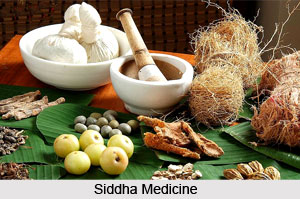 Pointed Gourd which is called "Potol" in Bengali and "Parwal" in Hindi is one of the famous vegetable in India. Botanically named as Trichosanthes Dioica, is extensively cultivated as an article of food in Bengal. The unripe fruits are much used by the natives as a culinary vegetable and are considered very wholesome and especially suited for the convalescent. In fact they constitute one of the most palatable vegetables grown in this country. The tender tops are also used as a pot-herb and are regarded as tonic and vermifuge.
Pointed Gourd which is called "Potol" in Bengali and "Parwal" in Hindi is one of the famous vegetable in India. Botanically named as Trichosanthes Dioica, is extensively cultivated as an article of food in Bengal. The unripe fruits are much used by the natives as a culinary vegetable and are considered very wholesome and especially suited for the convalescent. In fact they constitute one of the most palatable vegetables grown in this country. The tender tops are also used as a pot-herb and are regarded as tonic and vermifuge.
Health Benefits of Pointed Gourd
The leaves, fresh juice of the fruits and the root are all used medicinally. The leaves are described as a good, light and agreeable bitter tonic. The fresh juice of the leaves of Trichosanthes Dioica is recommended by several writers, to be applied to the bald patches of alopecia. The bulbous root is called Ramyaka in Sanskrit and is classified amongst purgatives by Sushruta.
Dose of Pointed Gourd in Medicine
The fresh juice of the unripe fruit is often used as a cooling and laxative adjunct to some alterative medicines such as the preparation called Rasa "Sindura". In bilious fevers, a decoction of patola leaves and coriander in equal parts is given as a febrifuge and laxative. The leaves enter into the composition of several compound decoctions for fevers. The following called "Patoladi Kvatha" is an illustration. Take patola leaves, red sandal wood, root of Sanseviera Zeylanica (murva), Picrorrhiza Kurroa (katuki), Stephania hernaudifolia (patha) and gulancha, each one drachm, water half a seer, boil together till reduced to one-fourth.
Patola enters into the composition of several compound decoctions for boils and other skin diseases for which it is considered a very efficacious remedy. The following is an illustration. Take patola leaves, gulancha, mustaka, chiretta, neem bark, catechu, root-bark of Justicia Adhatoda (vasaka) and Oldenlandia herbacea (parpata) in equal parts, all 2 tolas and prepare a decoction in the usual way. This decoction is regarded as a valuable alterative, tonic and febrifuge.
The root is used in combination with Ipomcea Turpethum and other adjuncts as a drastic purgative in jaundice, anasarca and ascites. The following called "Patoladya Churna" is an illustration. Take the root of Trichosanthes dioica (patola), turmeric, baberang seeds, kamala powder and the three myrobalans 2 tolas each, cinnamon and the root of the indigo plant 3 tolas each, Ipomcea Turpethum (trivrit) 4 tolas; powder the ingredients finely and mix. Dose is about one drachm with cow"s urine. After the use of this medicine, light food such as gruel should only be taken.
Related Articles
Ayurveda
Ayurveda Medication
Elements of Ayurveda
Concepts of Ayurveda
Ancient Literature of Ayurveda
Sushruta Samhita
Classification of Medicine




















